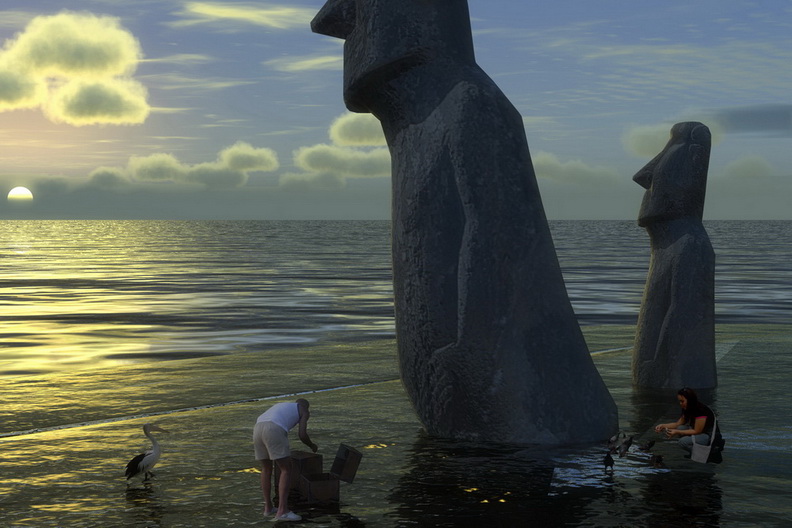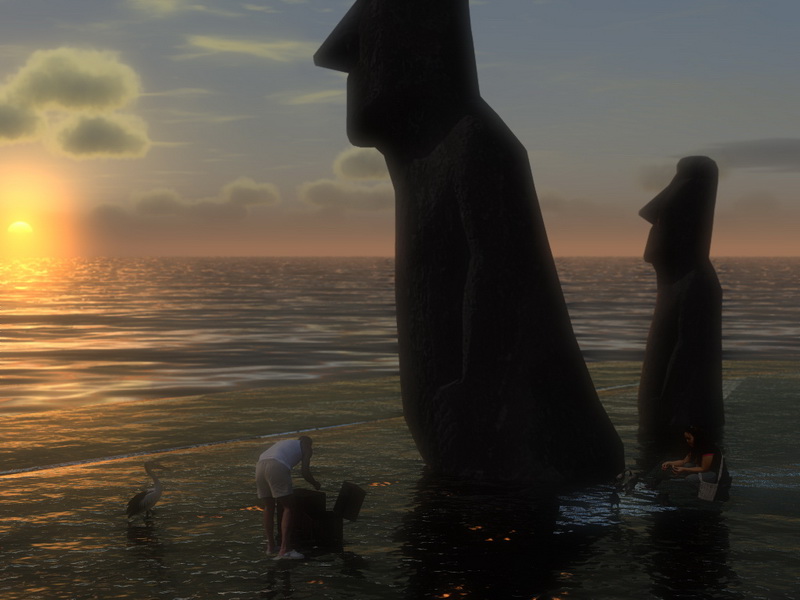BEST landscape boulders ?
-
-
Solo, that's realy neat.
One questin though: could you explain the bit about texturing using 2 different axis?
How do you use that? Is there a way to both instances of the texture simultaniously or do you texture seperate hemispheres with the appropriate texture? -
Really nice, Solo...
I'm interested to learn more about how you've managed to apply the texture in SU (or perhaps you've used another application for this purpose..?? )
)Also - would you mind sharing the two boulders - now that you've made them...

-
Okay, firstly the example above I never saved (made it as a referance only) and the texture was oversized in kb's anyway.
I made a lower poly one with a lower res texture on it attached below.The textures are applied in SU, infact they are nothing special, nor any unique way of application. I use two axis for projection and sometimes even 3 axis (getting them to blend is normally more tricky especially on a freeform shape)
If you go close up you will notice they are not smoothly blended actually, but from a distance with vegetation around and shadows they will be fine.
-
Thanks for sharing and taking your time to explain this, Pete!
Much appreciated!
When it comes to applying textures to spheric shapes, I always seem to have difficulties...
(and maybe you had used another application to apply the textures - like Deep Exploration... )
) -
By moving the image around and sampling different bits, it's possible to map even a non-tiling image like this one I just pulled off the Net onto a boulder without too many seams being evident. This was done in SU.
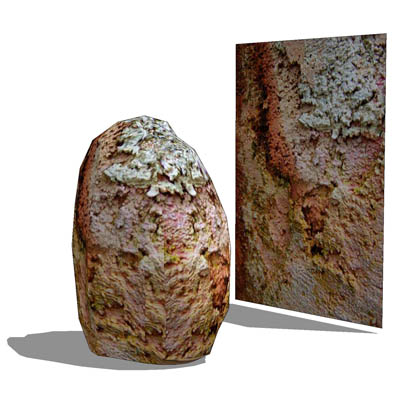
-
Alan -- Your last boulder model just blew me away. Now THAT is what I have had in mind as the type of boulder I would like to be turning out.
Would you please clarify a couple of points:Sampling: By that do you mean the technique of holding down SHIFT while clicking on the Paint Tool which then turns into an eyedropper -- "sampling" the color or texture of a face? Projection: Are you doing what Solo seems to be doing? -- projecting the textures with different axes? I just don't get how that works. My experience with applying colors and textures seems to simply involve selecting a face and applying the color/texture. What step am I missing? So it seems your method is to create a spherical shape then explode the modified sphere so it can be edited. Then you project a large format texture onto portions of the shape. You keep turning it round to locate "streaks" in the texture and then use sampling to even them out. Is that more or less what it consists of?Thanks for your patience on this subject.
It is definitely a skill I would like to master.Danty
-
Yes, by sampling I mean sampling the image with the Paint tool (except you hold down Alt, not Shift...I'm sure that's what you meant.)
What I did with the boulder above was to line it up alongside the flatter sides of the boulder, sample it (after first making sure it was stretched big enough to overlap the extents of the rock), then paint the entire boulder. The flattish sides were obviously ok, but that technique leaves some nasty streaky bits on the sharper sides and the top.
These were fixed by simply moving the image around, first by rotating it 90 degrees horizontally and lining up the pattern on it so it would blend reasonably with what was already there, then just resampling the image in its new position and painting the streaked faces. Obviously you need to turn hidden geometry on first, or you'll repaint the entire boulder instead of a single face.
Lastly, I pulled the image up, rotated it and floated it above the boulder, positioning it so I got that lichen or efflorescent texture in the right position to project down and extend the stuff that was already there. It's not perfect and it takes a bit of trial and error, but the end result is good enough to pass muster.
-
-
-
-
Hello, here you are three boulders one tree and seamless Asturian grass texture.
The rock texture is seamless. It is made of a photograph near the Cantabrian sea, near my home.
Ejoy
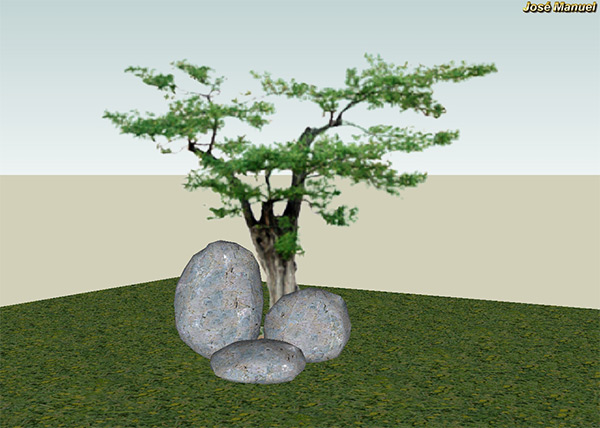
-
Looking for a good workflow for creating a stacked limestone wall. Any ideas would be helpful. I started off with basic shape as rectangle. Is there a ruby script to select and make square somewhat irregular at the edges?
Stone in background was done by fillet block ruby and then subdivided for editing by scaling.

-
Just thought I'd add that the boulder techniques can be used to create landscapes too...
I attach an old quickie I made using Alan's trike and boy from Formfonts. The big rock is a very low poly model with a large texture image applied to it.
Regards, Ross
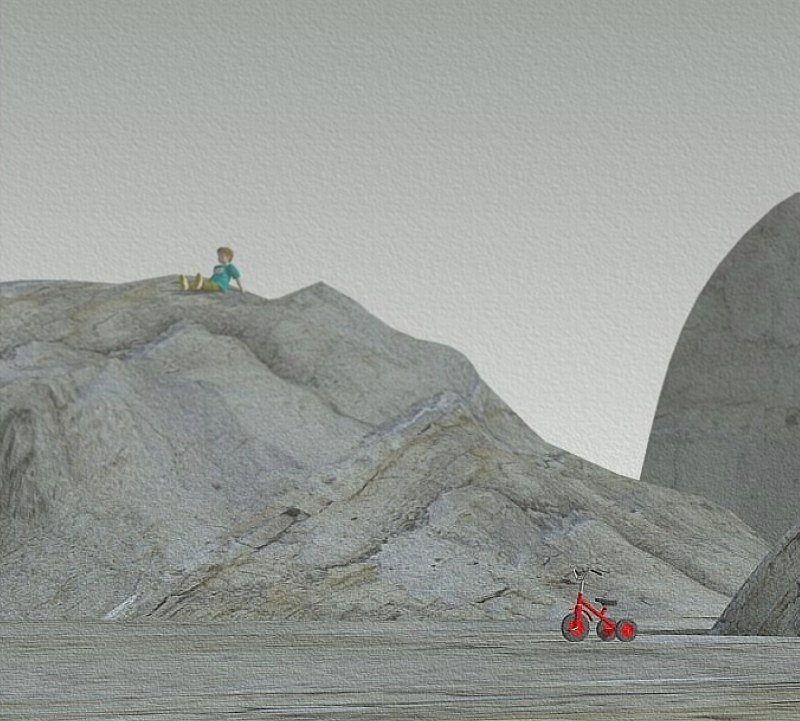
-
Whres the pic/component ross?

-
Nice image Ross

-
Indeed that does look very good, the scene reminds me of the beach...apart form the trike
-
I have had my own fun making rocks. . . .thanks for the technique. rendering not so great. . .but hey
D
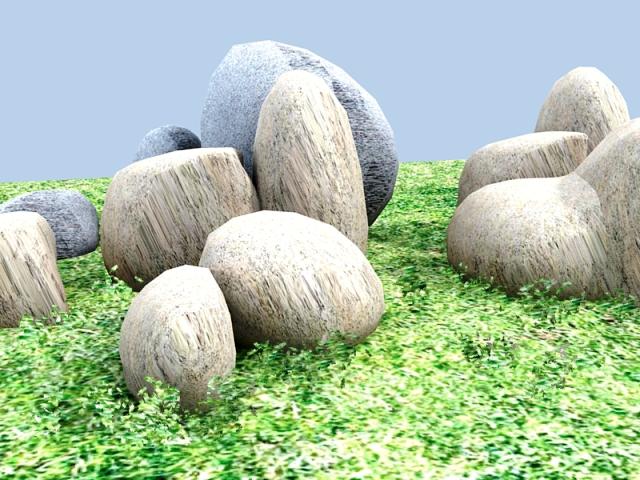
-
David,
I see you are getting into sub-smooth, there are a few new tools like 'UV tools' that can map your textures pretty well these days in SU.
If you use bumps and/or displacement you can create some really cool rock textures too.
I saw on another thread you enquiring about flower beds, Clipmaps will work on one view only (unless you are up to moving each on individually as 'face me' will not suffice)so I suggest modeling some low poly flowers (mapping the textures right) and using them as components.Here is a basic idea of different rock textures and some plants arranged as a rock bed. Rendered with Vue 6 xstream.
-
Very beautiful composition. I like it very much
Advertisement




 Silently...
Silently... 


